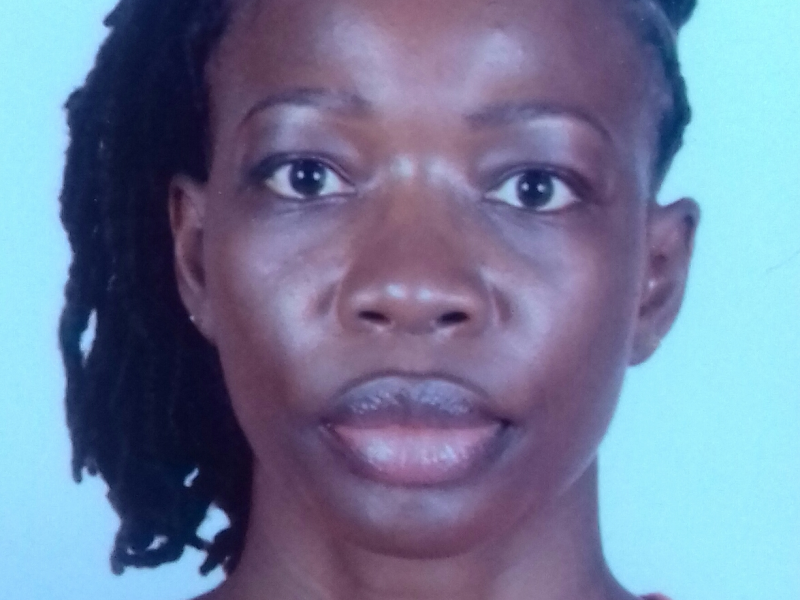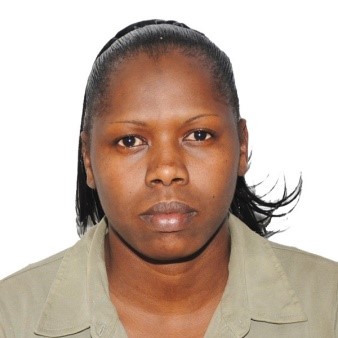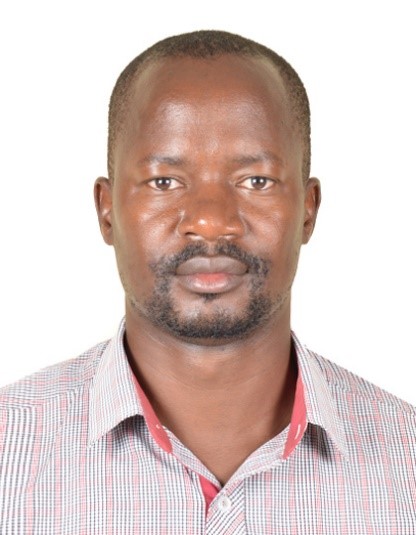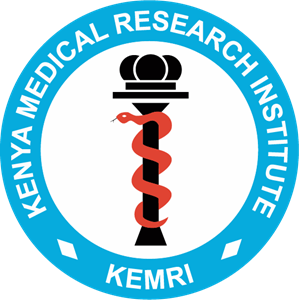Entomology Division
STAFF
Eric Odhiambo Ochomo, MSc, Ph.D.
Senior Research Officer/ Head of Entomology Section
Education: BSc, MSc and PhD Biomedical Science and Technology, Medical Entomology and Vector Science major from Maseno University, Kenya.
Research Fellow – American Society of Microbiology and Centers for Disease Control (ASM/CDC), Atlanta, GA, USA.
Consultancies:
Development of the Kenya Insecticide Resistance Management (IRM) Plan 2019-2024 to guide the implementation of insecticide resistance management by the Kenya National Malaria Control Program
Development of the Kenya Mosquito Surveillance Guidelines 2019-2024 to support the Kenya National Malaria Control Program.
Consultant for the MENTOR Initiative on protocol development and entomological surveillance for the Evaluation of a novel household vector control kit against Aedes and Anopheles mosquitos in conflict prone areas project implemented in Wajir County, Kenya.
Selected Publications
- Lucas, E. R., K. A. Rockett, A. Lynd, J. Essandoh, N. Grisales, B. Kemei, H. Njoroge, C. Hubbart, E. J. Rippon, J. Morgan, A. E. Van’t Hof, O. Ochomo, D. P. Kwiatkowski, D. Weetman, and M. J. Donnelly. 2019. A high throughput multi-locus insecticide resistance marker panel for tracking resistance emergence and spread in Anopheles gambiae. Scientific Reports 9: 13335.
- Agumba S, Gimnig JE, Ogonda L, Ombok M, Kosgei J, Munga S, Guyah B, Omondi S, Ochomo E. Diagnostic dose determination and efficacy of chlorfenapyr and clothianidin insecticides against Anopheles malaria vector populations of western Kenya. Malar J. 2019 Jul 17;18(1):243. doi: 10.1186/s12936-019-2858-z. PMID: 31315614; PMCID: PMC6637467.
- Sedda L, Lucas ER, Djogbénou LS, Edi AVC, Egyir-Yawson A, Kabula BI, Midega J, Ochomo E, Weetman D, Donnelly MJ. Improved spatial ecological sampling using open data and standardization: an example from malaria mosquito surveillance.J R Soc Interface. 2019 Apr 26;16(153):20180941. doi: 10.1098/rsif.2018.0941. PubMed PMID: 30966952.
Gimnig JE, Ochomo E. New opportunities for malaria vector control. Lancet. 2018 Aug 18;392(10147):534-536. doi: 10.1016/S0140-6736(18)31817-8. Epub 2018 Aug 10.

contact
Kenya Medical Research Institute-Centre for Global Health Research (KEMRI-CGHR)
P.O. Box 1578-40100
Kisumu, Kenya
Email: gro.cdcirmek@omohcoe moc.oohay@omohcocire
- Current Research Grants:
- Grant number OPP1210769 from Bill and Melinda Gates Foundation to Eric Ochomo Role: PI Building the Capacity for the utility of Next Generation Sequencing in Insecticide Resistance Management by African National Malaria Control programs (March 2019 – August 2020)
- Grant number OPP1210327 from Bill and Melinda Gates Foundation through Pan African Mosquito Control Association (PAMCA) to Themba Mzilahowa Role: Co-PI The East-South Africa Anopheles funestus Consortium: Building the capacity for funestus entomological surveillance, insecticide resistance and genomic diversity studies in Malawi, Kenya, Uganda and Tanzania (April 2019 – April 2020) $300,000
- Grant number OPP1210319 from Bill and Melinda Gates Foundation through Pan African Mosquito Control Association (PAMCA) to Luna Kamau Role: Co-PI Anopheles gambiae and Anopheles arabiensis genetic diversity and association with insecticide resistance in Kenya (April 2019 – April 2020) $100,000
- UNITAID through University of Notre Dame to John Grieco Role: Site PI Advancing Spatial Repellents for Vector-Borne Disease Control (2019-2023)
- Using spatial statistics and genomics to develop epidemiologically relevant definitions of insecticide resistance in African Malaria Vectors (March 2018 – March 2019).
- Integrated Vector Control Consortium (IVCC) October 2018-December 2020) Role: PI Entomological evaluation of an attractive targeted sugar bait (ATSB) in western Kenya. Part of a Multi-Country Study, others being Mali and Zambia, results of this trial to determine an award of a Multi-Country 3-year Phase 3 evaluation of ATSB
- Subcontract on NIH NIAID funding to Prof. Martin Donnelly Role: Site PI. Genome-based diagnostics for mapping, monitoring and management of insecticide resistance in major African malaria vectors (2016-2020)
Other Major Achievements:
- April 2019: Leading the pilot project aimed at trialing nanopore sequencing using the Oxford Nanopore MinION® through the Mobile Malaria Project (https://mobilemalaria.com/week-6-entomological-surveys-in-kisumu/).
- Awarded the Emerging global leader award in International Medical Entomology at the American Committee for Medical Entomology at the American Society for Tropical Medicine and Hygiene (ASTMH) meeting in Baltimore, MD, USA in November 2017.
- Co-Lead for the insecticide resistance mapper: http://www.irmapper.com/
Dr Prisca Oria
Senior Research Officer (Social Scientist)
Prisca holds Bachelor of Arts (Anthropology) and Master of Arts (Communication Studies) degrees from the University of Nairobi, and a PhD (Sociology) from Wageningen University, the Netherlands.
Since 2007, she has provided social science technical expertise to public health research projects including diarrhoeal disease management in children, seasonal and pandemic influenza vaccination among the general population and health care workers, and lately, malaria vector control.
Current Position: Social Scientist on the study “Understanding behavioural, market and practical factors affecting potential of household spatial repellents use for malaria control in western Kenya”

Publications
- Options for sustaining solar-powered mosquito trapping systems on Rusinga Island, western Kenya: a social dilemma analysis. Prisca A Oria, Michiel Wijnands, Jane Alaii, and Cees Leeuwis. BMC Public Health. 2018.
- Stepped wedge cluster-randomised trial of the impact of mass mosquito trapping on malaria (SolarMal). Tobias Homan, Alexandra Hiscox, Collins K Mweresa, Daniel Masiga, Wolfgang R Mukabana, Prisca A Oria, Nicolas Maire, Aurelio Di Pasquale, Mariabeth Silkey, Jane Alaii, Teun Bousema, Cees Leeuwis, Thomas A Smith, and Willem Takken. The Lancet. 2016.
- Mass mosquito trapping for malaria control in western Kenya: study protocol for a stepped wedge cluster-randomised trial. Alexandra Hiscox, Tobias Homan, Collins K Mweresa, Nicolas Maire, Aurelio Di Pasquale, Daniel Masiga, Prisca A Oria, Jane Alaii, Cees Leeuwis, Wolfgang R Mukabana, Willem Takken, Thomas A Smith. Trials. 2016.
- Combining malaria control with house electrification: adherence to recommended behaviours for proper deployment of solar-powered mosquito trapping systems, Rusinga Island, western Kenya. Prisca A Oria, Jane Alaii, Margaret Ayugi, Willem Takken, and Cees Leeuwis. Tropical Medicine and International Health. 2015.
- Tracking the mutual shaping of the technical and social dimensions of solar-powered mosquito trapping systems (SMoTS) for malaria control on Rusinga Island, western Kenya. Prisca A Oria, Jane Alaii, Margaret Ayugi, Wolfgang R Mukabana, Willem Takken, Cees Leeuwis. Parasites and Vectors. 2014.
- Assessing Parents’ Knowledge and Attitudes towards Seasonal Influenza Vaccination of Children Prior to and following a Seasonal Influenza Vaccination Effectiveness Study in Urban and Rural Kenya, 2010-2011. Prisca A Oria, Geoffrey Arunga, Emmaculate Lebo, Joshua W Wong, Gideon Emukule, Nancy Otieno, Philip Muthoka, David Mutonga, Robert F Breiman, Mark A Katz. BMC Public Health. 2013.
- Examining the Use of Oral Rehydration Salts and Other Oral Rehydration Therapy for Childhood Diarrhea in Kenya. Lauren S Blum, Prisca A Oria, Christine K Olson, Robert F Breiman, and Pavani K Ram. American Journal of Tropical Medicine & Hygiene. 2011.
- Community Case Management of Childhood Diarrhea in a Setting with declining use of Oral Rehydration Therapy: Findings from Cross-sectional Studies among Primary Household Caregivers, Kenya, 2007. Christine K Olson, Lauren S Blum, Kinnery N Patel, Prisca A Oria, Daniel R Feikin, Kayla F Laserson, Annah W Wamae, Alfred V Bartlett, Robert F Breiman, and Pavani K Ram. American Journal of Tropical Medicine & Hygiene. 2011.
- Are Kenyan Healthcare Workers Willing to Receive the Pandemic Influenza Vaccine? Results from a Cross-sectional Survey of Healthcare Workers in Kenya about Knowledge, Attitudes and Practices about Infection with and Vaccination against 2009 Pandemic Influenza A (H1N1), 2010. Prisca A Oria, Wycliffe Matini, et al. Vaccine. 2011.
Jackline Jeruto Kosgei
| Jackline holds is a PhD candidate of Maseno University, holds a Master of Science in Medical Entomology and vector science major and a BSc in Biomedical Science and Technology from Maseno University.
Jackline is a distinguished scholar with experience in malaria vector research and possess expert skills in field collection and laboratory analysis of mosquitoes. Since 2012, She has successfully supervised the development of policies and overseen the establishment, design, and delivery of project initiatives. She represents KEMRI CGHR at the National Malaria control Program (NMCP) and a member of the vector control steering committee. |
Current Position: Research Officer in charge of coordination of the Attractive Sugar Bait Study and the lead person of other entomology studies within KEMRI CGHR

CONTACT
| Kenya Medical Research Institute-Centre for Global Health Research (KEMRI-CGHR)
P.O. Box 1578-40100 Kisumu, Kenya |
gro.cdcirmek@iegsoKJ, moc.oohay@otureikcaj
SELECTED PUBLICATIONS
| 1. 1. Agumba S, Gimnig JE, Ogonda L, Ombok M, Kosgei J, Munga S, Guyah B, Omondi S, Ochomo E. Diagnostic dose determination and efficacy of chlorfenapyr and clothianidin insecticides against Anopheles malaria vector populations of western Kenya. Malar J. 2019 Jul 17;18(1):243. doi: 10.1186/s12936-019-2858-z. PMID: 31315614; PMCID: PMC6637467.
2. Maxwell G. Machani, Eric Ochomo, Jackline Kosgei, Fred Amimo, Stephen Munga, Andrew K. Githeko, Guiyun Yan, and Yaw A. Afrane; Resting behaviour of malaria vectors in a highland and lowland area of western Kenya: Implication on malaria vector control measures (In press) 3. Bayoh, Nabie, Kosgei Jackline, Walker, Edward, Ombok, Maurice, Olang, George, Githeko, Andrew, Killeen, Gerry, Otieno, Peter, Kariuki, Simon, Desai, Meghna, Lobo, Neil, Vulule, John, Hamel Mary and Gimnig, John: Persistently high estimates of late night, indoor exposure to malaria vectors despite high coverage of insecticide treated nets. Parasites & Vectors, 2014; 7:380. 4. John E. Gimnig, Edward D. Walker, Peter Otieno, Jackline Kosgei, George Olang, Maurice Ombok, John Williamson, Doris Marwanga, Daisy Abong’o, Meghna Desai, Simon Kariuki, Mary J. Hamel,Neil F. Lobo, John Vulule, and M. Nabie Bayoh, 2013; Incidence of Malaria among Mosquito Collectors Conducting Human Landing Catches in Western Kenya. Am. J. Trop. Med. Hyg., 2013; 88(2): 301-8 |
Bernard Onyango Abong’o, MSc, Ph.D.
Education: BSc and MSc Biomedical Science and Technology, Medical Entomology and Vector Science major from Maseno University, Kenya.
PhD in Vector Biology from Liverpool School of Tropical Medicine (LSTM), Liverpool, UK
Achievements:
- Development and implementation of low-cost community-based entomology surveillance for longitudinal monitoring of mosquito populations
- Evaluation of a novel outdoor mosquito trapping technique
Evaluation of entomological impact of IRS with Actellic 300CS for malaria transmission reduction

CONTACTS
Kenya Medical Research Institute-Centre for Global Health Research (KEMRI-CGHR)
P.O. Box 1578-40100
Kisumu, Kenya
Mobile: +254726825290
Email: moc.liamg@nebognoba
SELECTED PUBLICATIONS
- Odero NA, Samuels AM, Odongo W, Abong’o B, Gimnig J, Otieno K, et al. Community-based intermittent mass testing and treatment for malaria in an area of high transmission intensity, western Kenya: development of study site infrastructure and lessons learned. Malaria journal. 2019;18(1)
- Smit MR, Ochomo EO, Aljayyoussi G, Kwambai TK, Abong’o BO, Bousema T, Waterhouse D, Bayoh NM, Gimnig JE, Samuels AM, Desai MR, Phillips-Howard PA, Kariuki SK, Wang D, Ward SA, Ter Kuile FO. Human Direct Skin Feeding Versus Membrane Feeding to Assess the Mosquitocidal Efficacy of High-Dose Ivermectin (IVERMAL Trial). Clin Infect Dis. 2019 Sep 13;69(7):1112-1119. doi: 10.1093/cid/ciy1063. PubMed PMID: 30590537; PubMed Central PMCID: PMC6743833.
- Abong’o B, Yu X, Donnelly MJ, Geier M, Gibson G, Gimnig J, et al. Host Decoy Trap (HDT) with cattle odour is highly effective for collection of exophagic malaria vectors. Parasites & vectors. 2018;11(1).
- Smit MR, Ochomo EO, Aljayyoussi G, Kwambai TK, Abong’o BO, Chen T, et al. Safety and mosquitocidal efficacy of high-dose ivermectin when co-administered with dihydroartemisinin-piperaquine in Kenyan adults with uncomplicated malaria (IVERMAL): a randomised, double-blind, placebo-controlled trial. The Lancet Infectious Diseases. 2018.
- Ochomo EO, Bayoh NM, Walker ED, Abongo BO, Ombok MO, Ouma C, et al. The efficacy of long-lasting nets with declining physical integrity may be compromised in areas with high levels of pyrethroid resistance. Malaria journal. 2013;12:368.
- Samuels AM, Awino N, Odongo W, Abong’o B, Gimnig J, Otieno K, et al. Community-based intermittent mass testing and treatment for malaria in an area of high transmission intensity, western Kenya: study design and methodology for a cluster randomized controlled trial. Malaria journal. 2017;16(1):240.
- Smit MR, Ochomo EO, Aljayyoussi G, Kwambai TK, Abong’o BO, Bousema T, et al. Human Direct Skin Feeding versus Membrane Feeding to Assess the Mosquitocidal Efficacy of High-Dose Ivermectin (IVERMAL Trial). Clin Infect Dis. 2018.
